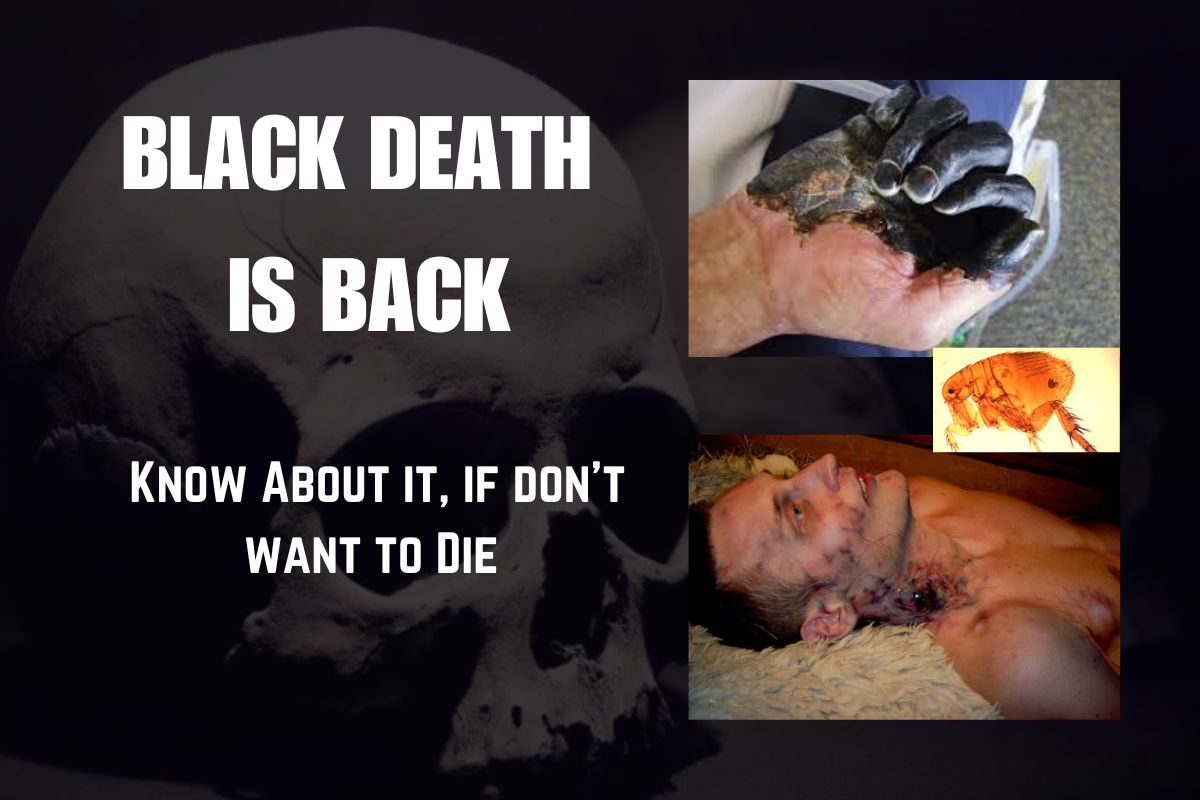Black Death: Colorado health department officials have said they are investigating a rare human plague case. The case was detected in Pueblo County, roughly 50 miles south of Colorado Springs, based on early test findings, according to the health agency.

The bubonic plague is caused by the bacteria Yersinia pestis and can be fatal to humans. According to the Centers for Disease Control and Prevention, it is most commonly transmitted by the bite of an infected flea or by handling contaminated animals.
Symptoms include fever, headache, chills, weakness, and one or more swollen, painful lymph nodes, according to health officials.
Key Facts
- Plague is a potentially life-threatening disease caused by the bacterium, Yersinia pestis.
- Plague occurs naturally in areas of the western United States, where it circulates among wild rodents and other animals.
- Plague can be cured with antibiotics, but treatment must be given quickly.
What is the black death ( human plague)?
Plague is a disease that affects both humans and mammals. It is caused by the bacteria Yersinia pestis. Humans typically become infected after being bitten by an infected rodent flea or handling an infected animal. Antibiotics can treat the plague but they must be administered quickly to avoid major sickness or death.
The plague is notorious for killing millions of people in Europe throughout the Middle Ages. Nowadays, it is an uncommon but persistent source of sickness in rural portions of the western United States, as well as certain African and Asian location
Origin of the Black Death
The Black Death’s origins are debated. According to genetic study, the Yersinia pestis bacteria developed approximately 2,600 years ago in the Tian Shan mountains, which border present-day Kyrgyzstan and China. The immediate territorial origins of the Black Death and its outbreak are unknown, however some evidence points to Central Asia, China, the Middle East, and Europe.

The pandemic was reputedly first introduced to Europe in 1347, when Jani Beg’s Golden Horde army besieged the Genoese commercial city of Kaffa in Crimea. Fleas feeding on black rats on Genoese ships most likely brought it from Crimea, spreading over the Mediterranean Basin and reaching North Africa, Western Asia, and the rest of Europe via Constantinople, Sicily, and the Italian Peninsula.
The Black Death was the second major natural disaster to strike Europe during the Late Middle Ages (the first being the Great Famine of 1315–1317), and it is thought to have killed 30%–60% of the European population, as well as around 33% of the Middle Eastern population.
Signs and Symptoms of Plague
Bubonic plague: Patients have fever, headaches, chills, weakness, and one or more swollen, painful lymph nodes (known as buboes). This kind is typically caused by the bite of an infected flea and has an incubation period of 2–8 days. Bacteria proliferate in a lymph node near where they entered the human body. If the patient is not treated with the appropriate medicines, the germs may spread to other parts of the body.

Septicemic plague: Patients suffer from fever, chills, acute weakness, stomach discomfort, shock, and maybe bleeding into the skin and other organs. Skin and other tissues can turn black and die, particularly on the fingers, toes, and nose. Septicemic plague can appear as the first symptom of plague or develop from untreated bubonic plague. This kind is caused by flea bites or contact with an infected animal. The incubation period of septicemic plague is unclear, however it is most likely to occur within days of exposure.

Pneumonic plague: causes fever, headache, weakness, and rapid-onset pneumonia with shortness of breath, chest pain, cough, and occasionally bloody or watery mucus. Pneumonic plague occurs when germs travel to a patient’s lungs from untreated bubonic or septicemic plague, or when a person inhales infectious droplets coughed up by another person or animal with pneumonic plague. Pneumonic plague is the most dangerous form of plague and the only one that can be transmitted from person to person. The incubation time for pneumonic plague after inhalation might be as brief as +1 day.
Treatment
Antibiotics are effective in treating and curing the bubonic plague. If you are diagnosed with bubonic plague, you will be admitted to the hospital and treated with antibiotics. In some situations, you may be placed in an isolation unit.
Antibiotics that treat bubonic plague include:
- Ciprofloxacin
- Levofloxacin
- Moxifloxacin.
- Gentamicin.
- Doxycycline.
What happens if bubonic plague isn’t treated?
Bubonic plague is fatal if not treated. It can spread infection throughout the body (septicemic plague) and/or infect the lungs (pneumonic plague). Without treatment, both septicemic and pneumonic plague are lethal.
Does Black Death still exist?
Bubonic plague, the most prevalent type of plague, is caused by the bite of an infected flea. The plague bacillus, Y. pestis, enters the body via the bite and travels through the lymphatic system to the next lymph node, where it replicates. The lymph node then becomes inflamed, tight, and painful, forming a ‘bubo’.
Can the bubonic plague be cured?
Antibiotics can treat the plague, but they must be administered quickly to avoid major sickness or death. The plague is notorious for killing millions of people in Europe throughout the Middle Ages.
How to prevent the Black Death?
Remove brush, rock piles, rubbish, cluttered firewood, and any potential rodent food sources, such as pet and wild animal food. Make your house and outbuildings rodent-proof. If you are handling or skinning potentially diseased animals, wear gloves to avoid coming into touch with plague bacteria.15 May 2024
Read more
The 84-year-old man who saved Nvidia

Becky Scott is a seasoned finance journalist specializing in providing expert guidance on financial news and trends. With a career dedicated to demystifying complex economic topics, Becky offers clear and insightful analysis that empowers readers to navigate the world of finance with confidence. Her articles are known for their practical advice and thorough research, aimed at helping individuals and businesses make informed financial decisions. Becky Scott’s passion for financial literacy is evident in her commitment to delivering accurate and accessible information that resonates with a wide audience.







